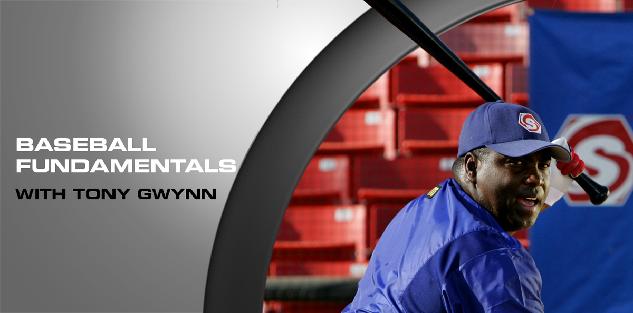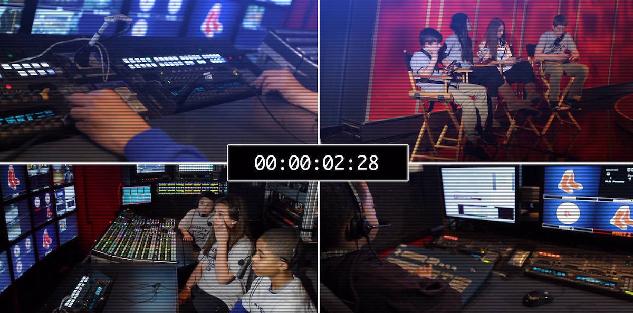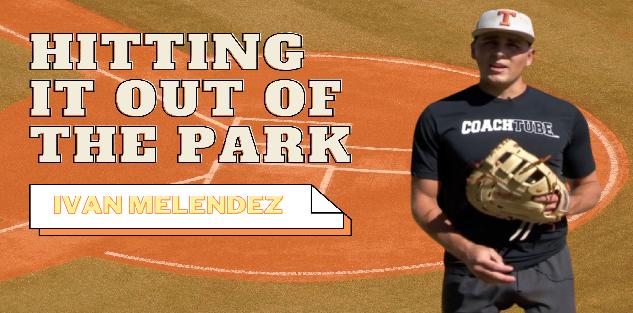Featured courses
- Understanding The Shift by Brandon Ogle
- Two Drills to Improve Outfield Movement and Communication by Grant Young
- The Ultimate Resource For Coaching Youth Baseball by Jackson Chlebowy
- Become a Master at Bunting by Brandon Ogle
- 5 Reasons Why There Is More To Good Base Running Than Just Speed by Brandon Ogle
- Three Injury-Prevention Tips For Your Offseason Pitching Program by Grant Young
- How to Teach Hitting to the Next Generation by Grant Young
- Developing Defensive-Minded Baseball Catchers by Grant Young
- 3 Baserunning Tips to Score More Runs in Baseball by Grant Young
- 5 Outfield Drills to Work on in Season by Alec Burris
- Keys For Scoring More With Runners on First and Third Base by Grant Young
- How to Develop Your Game to Become a Five-Tool Player by Brandon Ogle
- 3 Coaches Share the Keys to Running Baseball Practice the Right Way by Grant Young
- Four Drills to Sharpen a Baseball Hitter’s Vision at the Plate by Grant Young
- Four Quotes to Hit Better With Two-Strikes by Grant Young
- Four of Former MLB Pitcher Juan Nieves’ Movement-Based Pitching Drills by Grant Young
- Two Tips For Developing an Elite Baseball Bullpen by Grant Young
- Overcoming the Four Challenges of Indoor Baseball Practices Because of Weather by Grant Young
- Three Tips to Make Your Baseball Team Mentally Tougher by Grant Young
- Three Priceless Philosophies to Motivate Your Baseball Team by Grant Young
- Three Offseason Baseball Drills to Simulate Competition by Grant Young
- Three Baseball Offseason Strength and Conditioning Essentials by Grant Young
- Important Ways to Improve Your Baseball Team’s Baserunning by Grant Young
- Three Ways to Perfect Hitting Mechanics From an MLB Icon by Grant Young
- Catchers can influence pitchers...for bad or good by Drew Johnson
- Throwing Strikes and Playing Good Defense Equals Wins by Jose Ortiz
- Legendary Indiana Head Baseball Coach Bob Morgan’s Offensive Theory by Grant Young
- Tennessee Head Baseball Coach Tony Vitello on How to Practice Baserunning by Grant Young
- Three Great T-Ball Drills For Youth Baseball Players by Grant Young
- How to Manage a Baseball Pitching Staff by Grant Young
- Three Uncommon Tips to Become a Better Hitter by Grant Young
- How a Baseball Coach Can Develop Strike Throwers by Grant Young
- Drills to Develop Elite Baseball Outfielders by Grant Young
- Baseball Training Exercises to Strengthen Arm and Bat Speed by Grant Young
- How to Use Bunting to Score More Runs by Grant Young
- How To Build An Elite Baseball Infielder by Grant Young
- Three Drills to Improve Your Baseball Team's Infield Play by Grant Young
- Three Keys to Curating a Pitching Staff’s Success by Grant Young
- 3 Techniques to Develop a Baseball Player’s Hitting Approach by Grant Young
- How to Cultivate Confidence Within Your Pitchers by Grant Young
- 5 Every Day Drills To Help You Become A Better Catcher by tyler Linderman
- How to Throw A Curveball by Brandon Ogle
- How to Assemble a Lock-Down Bullpen by Brandon Ogle
- How to Throw a Sinker by Brandon Ogle
- How to be a Smart Baserunner by Brandon Ogle
- Improving a player's slugging average by Phillip Woolgar
- The 8 Fundamentals of Pitching by Drew Johnson
- How to Throw a Deceiving Changeup by Brandon Ogle
- Step Up Your Outfield Defense With These Three Drills by Jose Ortiz
- 8 Baseball Drills Every Player Should Practice by Drew Johnson
- How To Become An Elite Defensive Outfielder by Tyler Linderman
- 5 Tips For Crushing A Curveball by Johnny Grassi
- LEGENDS FOR YOUTH INCLUSION BASEBALL CLINIC by Phil
- Fourteen Ways To Turn A .300 Hitter Into A .210 Hitter by Jay P. Granat, Ph.D.
- How To Become The Ideal Leadoff Man by Brandon Ogle
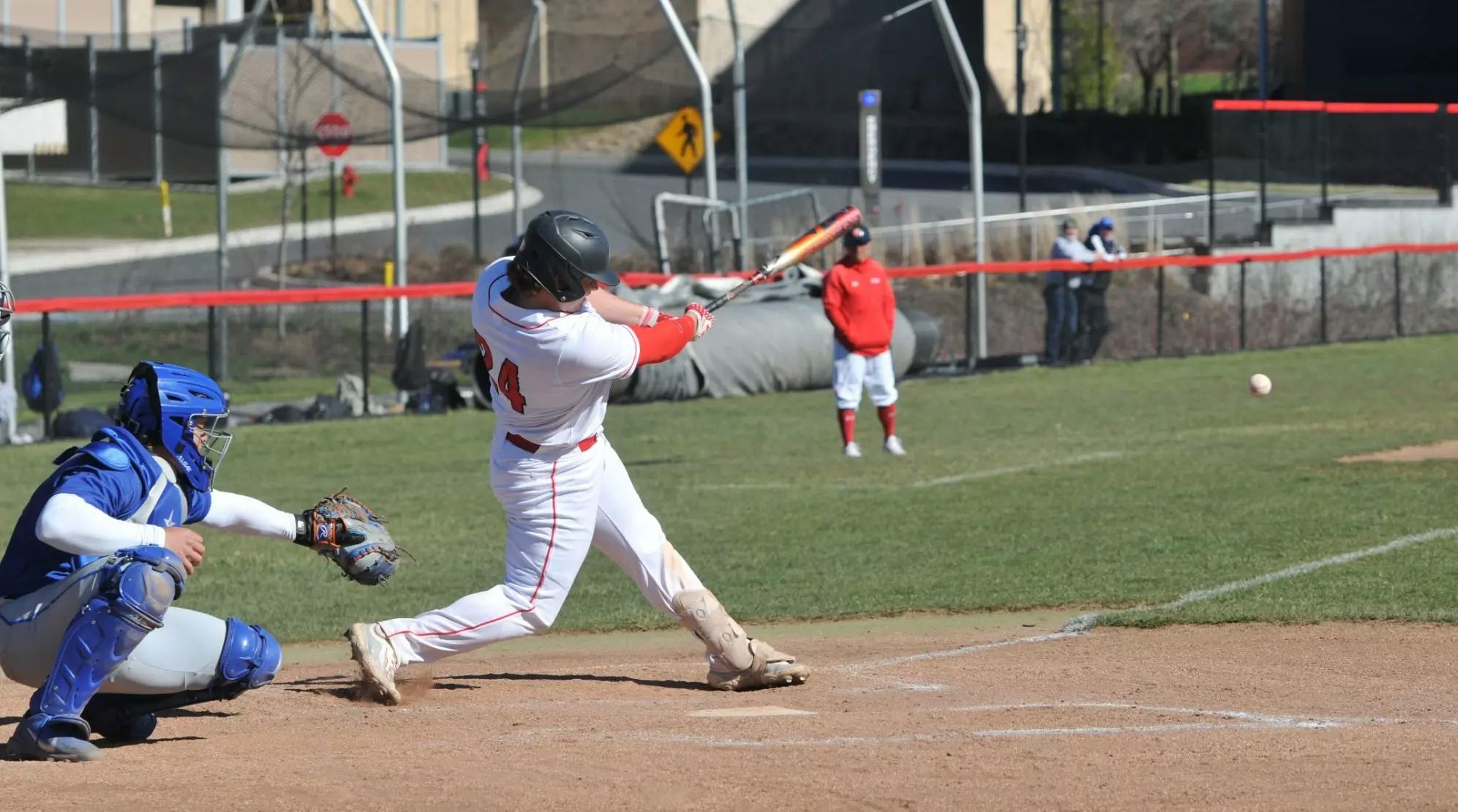
Four Quotes to Hit Better With Two-Strikes
- By Grant Young
Any baseball hitting approach coach can empathize with the fact that hitting with two strikes is exceedingly difficult for several reasons:
1. Psychological Pressure: When a batter has two strikes against them, the pressure intensifies. They know that one more mistake could lead to an automatic out, which can lead to anxiety and affect their focus and decision-making.
2. Pitcher’s Advantage: With two strikes, the pitcher has a greater advantage since they can throw a wider variety of pitches to try to induce a swing-and-miss. They often employ breaking balls or off-speed pitches that can catch hitters off guard.
3. Swing Adjustments: Batters may feel compelled to shorten their swing or alter their approach to make contact, which can compromise their usual mechanics. This can lead to hitting the ball poorly or missing it altogether.
4. Zone Awareness: With two strikes, batters have to be more discerning about the pitches they swing at. This heightened sense of caution can lead to hesitant swings or missed opportunities on pitches that are in the strike zone but not necessarily ideal for hitting.
5. Increased Focus: The need to focus intensifies with two strikes, as batters must anticipate the pitcher's next move while also adjusting to the potential of getting struck out. This heightened focus can be a double-edged sword; while it can help in making better decisions, it can also lead to tension.
These factors combine to make hitting with two strikes a difficult task, requiring not just skill but also mental resilience and adaptability. However, while nothing will keep hitters from being at a disadvantage with two strikes, having a solid hitting approach in these situations can help balance the odds.
Brandon Matthews is a professional hitting instructor in North Carolina. Coach Matthews has almost 20 years of coaching experience at all levels from youth to professional baseball. In 2017, he started Swing Angry LLC for baseball and softball hitting instruction. Since then, Coach Matthews has performed thousands of lessons with youth to professional hitters.
In his ‘2 Strike Hitting: Approach, Philosophy, & Strategy’ course, Coach Matthews will teach you some unique strategies and game plans for handling 2 strike situations, such as controlling the at-bat before there are two strikes, how to remain aggressive, and diving deeper inside the data of pitch counts to help hitters better understand when the odds are more in their favor. We’ve pulled some of Coach Matthews’ best wisdom and included it for you below.
Hunt In The Zone
Coach Matthews asserts that most coaches will say that they want their hitters to expand the strike zone with two strikes so that there’s less of a chance that they’ll strike out.
To dispute this, he drops a quote from baseball legend Ted Williams, who said, “Giving the pitcher an extra two inches around the strike zone makes it 35% larger. Make sure you get a good ball to hit.”
Coach Matthews backs this point up by conveying that trying to avoid the strikeout isn’t the be-all-end-all when it comes to a two-strike approach. This is because if you swing at a bad pitch that’s not in the strike zone just so you aren’t called out on strikes, you’re still almost certainly going to be out. Not to mention that umpires (less skilled ones) are typically hesitant to call someone on strikes anyway.
“Everything in life happens twice: the first time in your mind and the second time in reality,” Coach Matthews goes on to say. What he means by this is that if a hitter’s approach is to expand the zone with two strikes, they’re already telling themselves that they’re going to chase something out of the strike zone and be content with weak contact.
Plus, this is going to make it much harder for a hitter to shut down their swing and not trigger to chase a breaking ball in the dirt or some other two-strike pitch that a hitter might see.
The bottom line is that if the hitter doesn’t chase with two strikes, the pitcher will still need to make a quality pitch in the strike zone to get the hitter out. Understanding this will increase the chances a hitter makes hard contact with a two-strike pitch.
External vs Internal
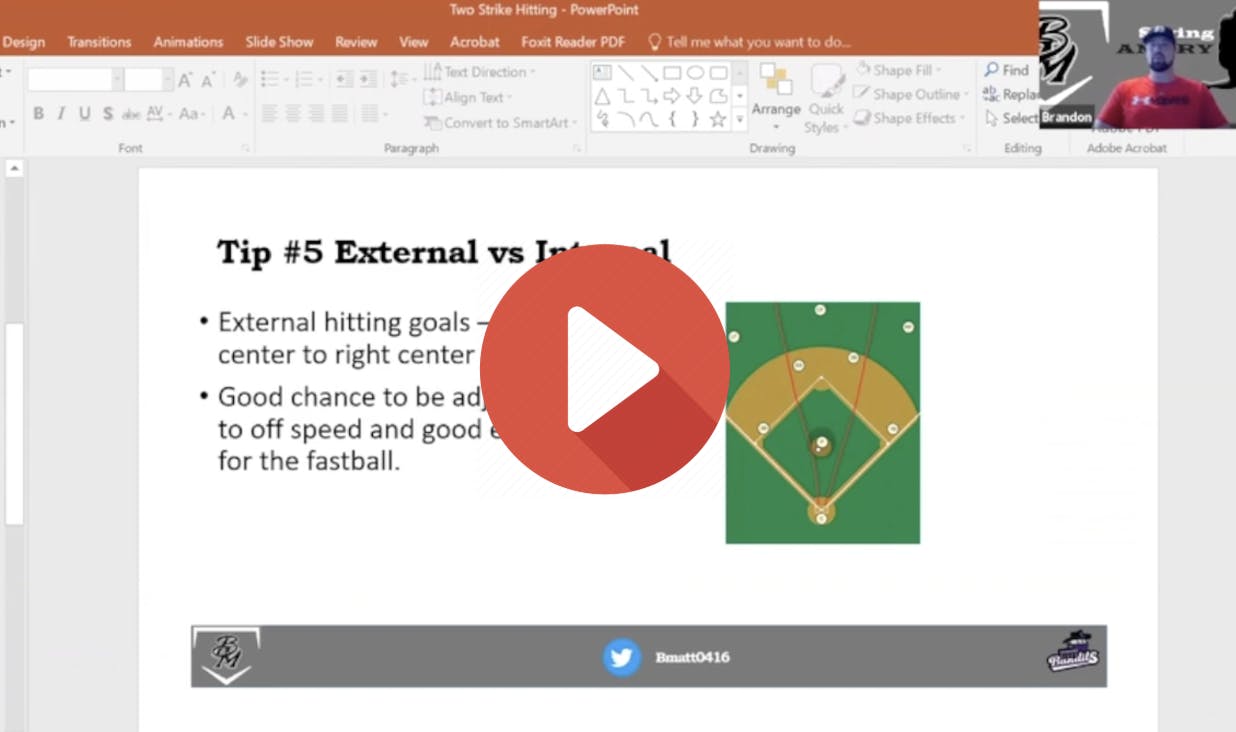
“When we get to a two-strike situation, if you can pick out an area of the field… if you can have an external goal to hit the ball hard somewhere on that [opposite field] area, it gives you some adjustable timing,” Coach Matthews said.
What he means by this is that preparing to hit the ball up the middle or to the opposite field will naturally make the hitter stay back on the ball more. This will not only make them less susceptible to chasing breaking balls in the dirt, but it will give them a bit more time to react and try to foul off a fastball or another pitch they weren’t expecting.
Coach Matthews also adds that if a team has enough data on what an opposing pitcher likes to do with two strikes, they can hunt specific zones and sometimes hunt specific pitches if a pitcher is disposed toward one pitch with two strikes.
“We can be adjustable in the hitting zone, and we can be adjustable in the strike zone.”
In other words, a hitter doesn’t have to tighten up or be prepared to chase as soon as they get to two strikes. They can relax, prepare to wait on the ball, and hit it the other way.

